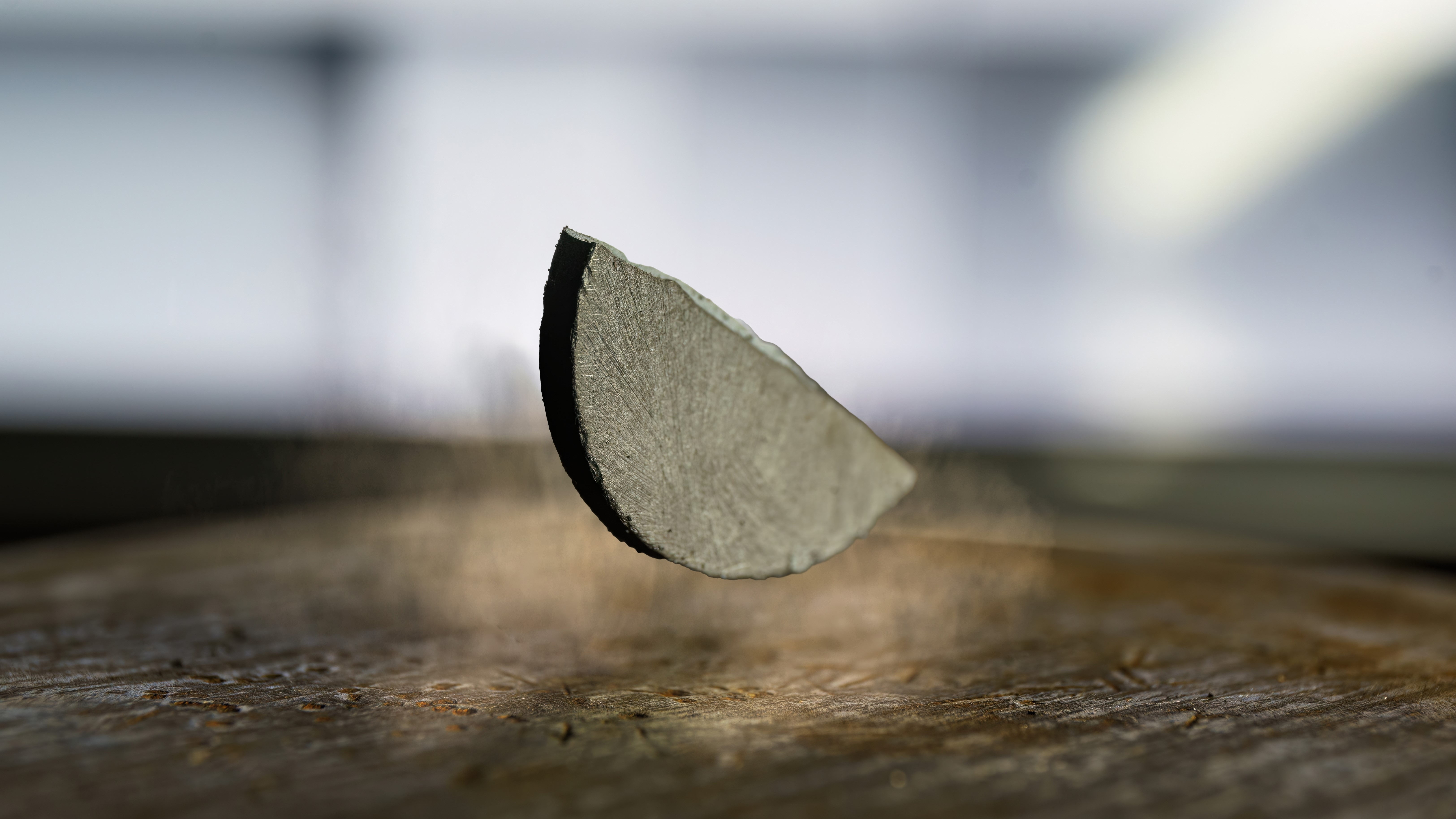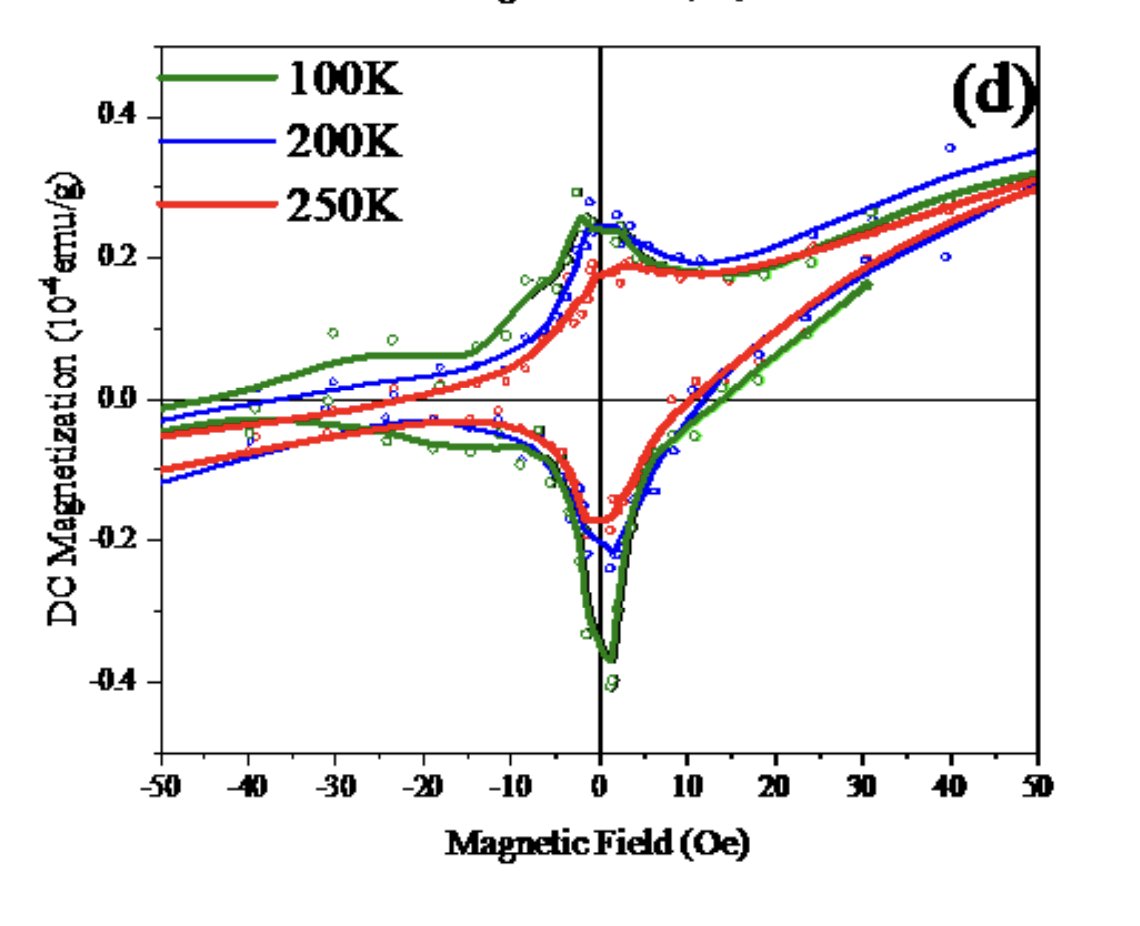New research reignites the possibility of LK-99 superconductivity at room temperature — controversial material demonstrates the tell-tale Meissner Effect up to 250 K

Two independent teams of researchers hailing from several universities in China and Japan have published new results on LK-99 that seemingly confirm the presence of room-temperature superconductivity. Uploaded to Cornell's pre-print (and thus not-formally-peer-reviewed) scientific publications server Arxiv, the joint paper describes a slightly different formulation of the original LK-99 formula - one which leads the abstract to end with a relatively muted "Our experiment suggests at room temperature the Meissner effect is possibly present in this material."
The Meissner effect, being one of the design secrets for superconductivity (corresponding to an emergent magnetic field that typically repels all others), is but one of the reasons their paper is important, even as it joins other research and patent updates asserting LK-99's superconductivity with increasing probability.
The paper owes much of its weight to its methodology as well. Both teams publicly tried to achieve an LK-99-like room-temperature, ambient-pressure superconductor, but used distinct synthesis and analysis processes. One team, headed by Yao Yao, used solid-state synthesis to cook their samples (the method described in the original LK-99 paper and the one whose replication attempts by renowned worldwide institutions previously failed to hold up to scrutiny) and subjected them to EPR (Electron Paramagnetic Resonance) to gauge their magnetic behavior. The other team, headed by Hongyang Wang, used hydrothermal synthesis and applied SQUID (Superconducting Quantum Interference Device) measurements. Ultimately, both teams managed to fabricate samples that they claimed showcased the Meissner effect.

By studying the samples' magnetization as a function of temperature (also known as the M-T curve), they were able to plot out the samples' behavior when subjected to an external magnetic field while cooled at different temperature levels, which resulted in the sample repelling it (translated in the function graph as negative magnetization) across at least the 100 K (-173.15 ºC), 200 K (-73.15 ºC), and 250 K (-23.15 ºC) temperature band, with a possible up to 300 K (26.85 ºC) maintenance of the superconductive state.
That's what the behavior of a room-temperature, ambient-pressure superconductor is supposed to look like, and even if there's a hard limit at 250 K (-23.15 ºC), that's a high-enough temperature that there's a category of freezers to come to our aid: laboratory-grade ultra-low temperature freezers, which are usually deployed for keeping vaccines, blood, and tissue samples at temperatures as low as - 80 ºC (200 K).
According to the paper, the teams fabricated modified samples of copper-doped lead apatite (with a chemical formulation of Pb9.1Cu0.9(PO4)6S)) that's different from the original recipe - a confirmation that part of the issue with replicating LK-99's superconductive behavior likely stemmed from ineffective substitutions of elements while in the cooking phase (we covered how the badly documented synthesis and doping processes might be key to the LK-99 drama).
The "meticulous" synthesis procedure involves heating a phosphate and lead sulfide solution under high pressures (while keeping the pH at a basic 8), followed by calcination of the samples (at 900 ºC for 8 hours), followed by another calcination procedure in a pure-oxygen atmosphere for 48 hours (at a reduced 500 ºC). It's perhaps easy to see how a quantum-chemistry fabrication procedure such as this, as meticulous but error-prone as it apparently is, could possibly be achieved in the kitchen of a Russian biologist. However, the paper is quick to assert that even with the fabrication method, sample viability is difficult - signs point towards the possibility of LK-99 being a Type-II superconductor, where only a small subset of the substance showcases superconductivity.
As we've previously seen, Type-II superconductors tend to have superconductive materials (which are their own phase of matter) mixed in with other types of materials (which display their own resistivity properties), creating tensions - literal magnetic vortices - where both areas intersect. In type-II superconductors, these vortices tend to increase as the conditions become sub-optimal for the superconducting phase of matter to emerge, leading to an eventual collapse of the superconducting state (you may put this in the same box as that of qubits decohering in quantum computing as a result of external stressors).
Get Tom's Hardware's best news and in-depth reviews, straight to your inbox.
As per the paper, even samples synthesized following the current best-known process (the one they employed) tend to have a high percentage of non-superconducting matter mixed in with the purportedly superconducting bits. In that scenario, it's easy to wrongfully declare samples as dead even after testing them. According to a conversation in a public forum attributed to the two lead authors, one of the superconductive samples they based their paper on was fabricated back in November of 2023, determined to be a dud, and was about to be trashed at multiple points of its life. Ultimately, the fabrication process is still horribly inefficient and isn't something we'd currently bother to scale (assuming the superconductivity thesis holds).
Understandably, perhaps, the authors seem to be unwilling to stir much trouble just yet (and they do end their abstract with a sentence that's as filled with defensiveness as with "suggestions" and "possibilities"). The two separate but co-authoring teams of scientists also attempted to placate doubts further by seemingly reproducing each other's results. That's not airtight, but it's hoped that the improved synthetization recipe will now allow other researchers to replicate these results.
Copper-substituted lead apatite, as the compound is known, was all the rage back in the summer of 2023 - when it was first hailed as a "room-temperature, ambient-pressure superconductor" by Lee and others. And it's only natural that a sentence such as that would result in a hype-wave - if there's something humanity as a collective should be excited about, it's the emergence of a material that can wastelessly conduct electricity. A superconductor that doesn't need to see above Earth's core pressure levels and/or be impractically-chilled to perform its job? One that could potentially be deployed across applications ranging from tiny quantum sensors through lossless energy storage?
That's the holy grail of condensed matter physics - and a reason why this research area has already had its share of purportedly false idols and faked data. That fact also might have had something to do with Nature's decision to stamp the LK-99 story as being over. Yet fumaroles seem to keep popping up around copper-doped lead apatite - and where there's smoke, there's usually fire. Either LK-99 (and more or less Sulfur-heavy-derivatives) is a result of collectively mistaken condensed matter physicists playing with the Internet's expectations across time, or something might truly be floating with LK-99. Whether that translates as the first room-temperature superconductor or simply as an object lesson in what little we still know about the universe is currently still open. But isn't that possibility exciting by itself?

Francisco Pires is a freelance news writer for Tom's Hardware with a soft side for quantum computing.
-
MiniITXEconomy I was just musing to myself about how I missed all the articles Tom's Hardware was pumping out about the whole ordeal, too, lolReply